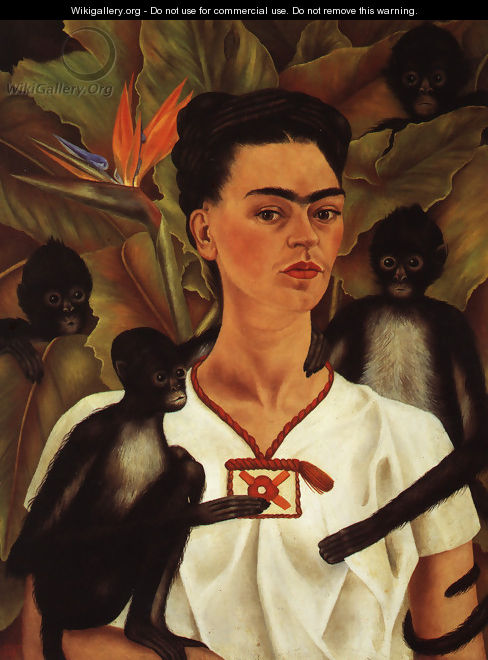Another NY Times piece:
March 6, 2007
A United Kingdom? Maybe
By NICHOLAS WADE
Britain and Ireland are so thoroughly divided in their histories that there is no single word to refer to the inhabitants of both islands. Historians teach that they are mostly descended from different peoples: the Irish from the Celts and the English from the Anglo-Saxons who invaded from northern Europe and drove the Celts to the country’s western and northern fringes.
But geneticists who have tested DNA throughout the British Isles are edging toward a different conclusion. Many are struck by the overall genetic similarities, leading some to claim that both Britain and Ireland have been inhabited for thousands of years by a single people that have remained in the majority, with only minor additions from later invaders like Celts, Romans, Angles, Saxons, Vikings and Normans. The implication that the Irish, English, Scottish and Welsh have a great deal in common with each other, at least from the geneticist’s point of view, seems likely to please no one. The genetic evidence is still under development, however, and because only very rough dates can be derived from it, it is hard to weave evidence from DNA, archaeology, history and linguistics into a coherent picture of British and Irish origins.
That has not stopped the attempt. Stephen Oppenheimer, a medical geneticist at the University of Oxford, says the historians’ account is wrong in almost every detail. In Dr. Oppenheimer’s reconstruction of events, the principal ancestors of today’s British and Irish populations arrived from Spain about 16,000 years ago, speaking a language related to Basque.
The British Isles were unpopulated then, wiped clean of people by glaciers that had smothered northern Europe for about 4,000 years and forced the former inhabitants into southern refuges in Spain and Italy. When the climate warmed and the glaciers retreated, people moved back north. The new arrivals in the British Isles would have found an empty territory, which they could have reached just by walking along the Atlantic coastline, since the English Channel and the Irish Sea were still land.
This new population, who lived by hunting and gathering, survived a sharp cold spell called the Younger Dryas that lasted from 12,300 to 11,000 years ago. Much later, some 6,000 years ago, agriculture finally reached the British Isles from its birthplace in the Near East. Agriculture may have been introduced by people speaking Celtic, in Dr. Oppenheimer’s view. Although the Celtic immigrants may have been few in number, they spread their farming techniques and their language throughout Ireland and the western coast of Britain. Later immigrants arrived from northern Europe had more influence on the eastern and southern coasts. They too spread their language, a branch of German, but these invaders’ numbers were also small compared with the local population.
In all, about three-quarters of the ancestors of today’s British and Irish populations arrived between 15,000 and 7,500 years ago, when rising sea levels split Britain and Ireland from the Continent and from each other, Dr. Oppenheimer calculates in a new book, ”The Origins of the British: A Genetic Detective Story” (Carroll & Graf, 2006).
Ireland received the fewest of the subsequent invaders; their DNA makes up about 12 percent of the Irish gene pool, Dr. Oppenheimer estimates. DNA from invaders accounts for 20 percent of the gene pool in Wales, 30 percent in Scotland, and about a third in eastern and southern England.
But no single group of invaders is responsible for more than 5 percent of the current gene pool, Dr. Oppenheimer says on the basis of genetic data. He cites figures from the archaeologist Heinrich Haerke that the Anglo-Saxon invasions that began in the fourth century A.D. added about 250,000 people to a British population of one to two million, an estimate that Dr. Oppenheimer notes is larger than his but considerably less than the substantial replacement of the English population assumed by others. The Norman invasion of 1066 brought not many more than 10,000 people, according to Dr. Haerke.
Other geneticists say Dr. Oppenheimer’s reconstruction is plausible, though some disagree with details. Several said genetic methods did not give precise enough dates to be confident of certain aspects, like when the first settlers arrived.
”Once you have an established population, it is quite difficult to change it very radically,” said Daniel G. Bradley, a geneticist at Trinity College, Dublin. But he said he was ”quite agnostic” as to whether the original population became established in Britain and Ireland immediately after the glaciers retreated 16,000 years ago, as Dr. Oppenheimer argues, or more recently, in the Neolithic Age, which began 10,000 years ago.
Bryan Sykes, another Oxford geneticist, said he agreed with Dr. Oppenheimer that the ancestors of ”by far the majority of people” were present in the British Isles before the Roman conquest of A.D. 43. ”The Saxons, Vikings and Normans had a minor effect, and much less than some of the medieval historical texts would indicate,” he said. His conclusions, based on his own genetic survey and information in his genealogical testing service, Oxford Ancestors, are reported in his new book, ”Saxons, Vikings and Celts: The Genetic Roots of Britain and Ireland.”
A different view of the Anglo-Saxon invasions has been developed by Mark Thomas of University College, London. Dr. Thomas and colleagues say the invaders wiped out substantial numbers of the indigenous population, replacing 50 percent to 100 percent of those in central England. Their argument is that the Y chromosomes of English men seem identical to those of people in Norway and the Friesland area of the Netherlands, two regions from which the invaders may have originated.
Dr. Oppenheimer disputes this, saying the similarity between the English and northern European Y chromosomes arises because both regions were repopulated by people from the Iberian refuges after the glaciers retreated.
Dr. Sykes said he agreed with Dr. Oppenheimer on this point, but another geneticist, Christopher Tyler-Smith of the Sanger Centre near Cambridge, said the jury was still out. ”There is not yet a consensus view among geneticists, so the genetic story may well change,” he said. As to the identity of the first postglacial settlers, Dr. Tyler-Smith said he ”would favor a Neolithic origin for the Y chromosomes, although the evidence is still quite sketchy.”
Dr. Oppenheimer’s population history of the British Isles relies not only on genetic data but also on the dating of language changes by methods developed by geneticists. These are not generally accepted by historical linguists, who long ago developed but largely rejected a dating method known as glottochronology. Geneticists have recently plunged into the field, arguing that linguists have been too pessimistic and that advanced statistical methods developed for dating genes can also be applied to languages.
Dr. Oppenheimer has relied on work by Peter Forster, a geneticist at Anglia Ruskin University, to argue that Celtic is a much more ancient language than supposed, and that Celtic speakers could have brought knowledge of agriculture to Ireland, where it first appeared. He also adopts Dr. Forster’s argument, based on a statistical analysis of vocabulary, that English is an ancient, fourth branch of the Germanic language tree, and was spoken in England before the Roman invasion.
English is usually assumed to have developed in England, from the language of the Angles and Saxons, about 1,500 years ago. But Dr. Forster argues that the Angles and the Saxons were both really Viking peoples who began raiding Britain ahead of the accepted historical schedule. They did not bring their language to England because English, in his view, was already spoken there, probably introduced before the arrival of the Romans by tribes such as the Belgae, whom Caesar describes as being present on both sides of the Channel.
The Belgae perhaps introduced some socially transforming technique, such as iron-working, which led to their language replacing that of the indigenous inhabitants, but Dr. Forster said he had not yet identified any specific innovation from the archaeological record.
Germanic is usually assumed to have split into three branches: West Germanic, which includes German and Dutch; East Germanic, the language of the Goths and Vandals; and North Germanic, consisting of the Scandinavian languages. Dr. Forster’s analysis shows English is not an offshoot of West Germanic, as usually assumed, but is a branch independent of the other three, which also implies a greater antiquity. Germanic split into its four branches some 2,000 to 6,000 years ago, Dr. Forster estimates.
Historians have usually assumed that Celtic was spoken throughout Britain when the Romans arrived. But Dr. Oppenheimer argues that the absence of Celtic place names in England — words for places are particularly durable — makes this unlikely.
If the people of the British Isles hold most of their genetic heritage in common, with their differences consisting only of a regional flavoring of Celtic in the west and of northern European in the east, might that perception draw them together? Geneticists see little prospect that their findings will reduce cultural and political differences. The Celtic cultural myth ”is very entrenched and has a lot to do with the Scottish, Welsh and Irish identity; their main identifying feature is that they are not English,” said Dr. Sykes, an Englishman who has traced his Y chromosome and surname to an ancestor who lived in the village of Flockton in Yorkshire in 1286.
Dr. Oppenheimer said genes ”have no bearing on cultural history.” There is no significant genetic difference between the people of Northern Ireland, yet they have been fighting with each other for 400 years, he said.
As for his thesis that the British and Irish are genetically much alike, ”It would be wonderful if it improved relations, but I somehow think it won’t.”






That could be most certainly the place where a different together with beautiful see at all times omega replica uk is available very useful. It's importantget a watch the fact that bespeaks what person a person happen to be. One can find five important options you might want to test prior to you chooseto acquire a different watch for all by yourself. That can be: Skin pattern together with layout – The usual skin pattern popular as soon as possible is certainly rolex replica pillow it is actually common together with beautiful. Even now as of late many other figures for example oval, block together with hexagonal. Therefore, you get pieces during figures for kittens similar to the hey kitty collection which unfortunately isextremely famous. You can at the same time get hold of see cartier replica which is a a natural part of a good accessory. Skin colors – Home furniture within the see skin known as historical past for see will depend on onyour preferred colors. However , make sure that home furniture probably would not cause it to be demanding to know point in time. A watch hublot replica uk for you to is unable to reveal to point in time is certainly unnecessary. It's advisable tobuy a watch by using a clear see skin. Those pieces are appealing you can easily in reality see real estate equipment in the see break. Bracelet layout – In experiencing chosen the face colors you can easily purchase a bracelet colors which unfortunately replica watches uk games any see skin or simply you can actually decided on a numerous colors. It’s a good bonanza when you experience several most loved designs. Any bracelet have to meet your look together with the earrings the fact that youprefer that will dress in when using the see.
polo ralph lauren
cheap uggs
michael kors uk
michael kors sale
barbour coats
nike huarache
links of london
michael kors handbags clearance
oakley sunglasses wholesale
tory burch outlet
louis vuitton handbags
michael kors outlet
tiffany jewellery
ugg boots
cheap mlb jerseys
kobe bryant shoes
nike air force 1
ghd hair straighteners
michael kors factory outlet
prada shoes
coach outlet
true religion jeans
longchamp handbags
herve leger outlet
ray ban
toms outlet
canada goose jackets
coach outlet
moncler outlet
louis vuitton
hermes bags
ugg outlet
michael kors handbags
oakley outlet
cheap nba jerseys
asics
parajumpers coats
nobis outlet
ray ban sunglasses
jordan shoes
20151031caihuali
true religion outlet
true religion jeans
true religion jeans
true religion jeans outlet
true religion outlet
true religion jeans
true religion jeans
true religion canada
true religion outlet
true religion jeans
toms outlet
toms outlet store
toms shoes
toms outlet
timberland shoes
timberland boots
tiffany outlet
tiffany and co
tiffany outlet
tiffany jewellery
thomas sabo uk
thomas sabo outlet
swarovski outlet
swarovski crystal
swarovski outlet
swarovski crystal
swarovski outlet
swarovski crystal
swarovski jewelry
swarovski crystal
soccer jerseys
soccer jerseys wholesale
rolex watches
rolex uk
rolex watches
rolex watches for sale
ray ban sunglasses
xiezepeng 16 02 24